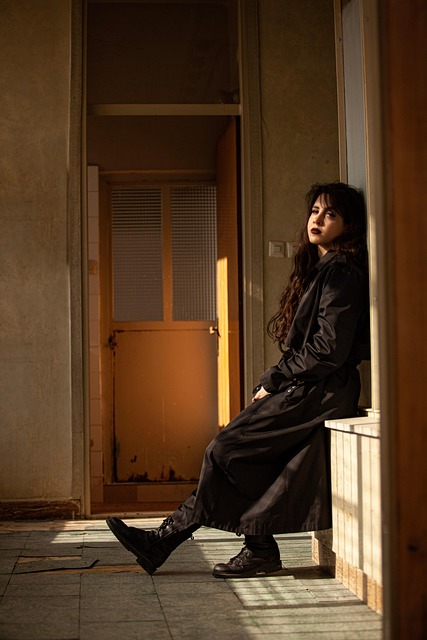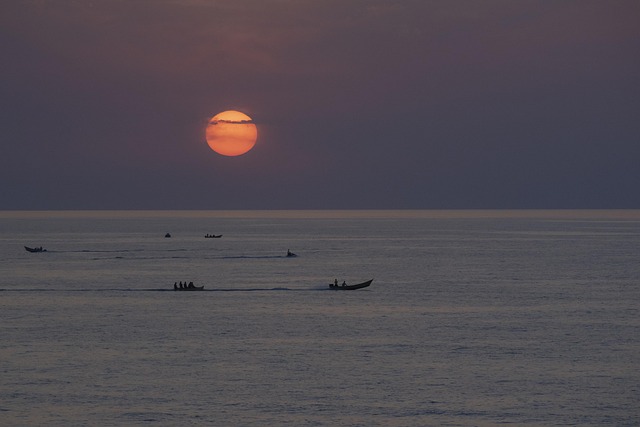Respecting local traditions is essential when visiting Iran. Understanding and adhering to Iranian customs, such as dressing modestly and practicing 'taarof' hospitality, fosters meaningful connections. Researching historical context, including the Iranian Revolution, enhances cultural appreciation. Supporting local businesses, artisans, and participating in festivals like Nowruz positively impacts communities while preserving age-old traditions. These practices ensure a respectful and immersive travel experience in this culturally rich country.
Respecting local traditions is paramount when visiting or engaging with any culture, especially in Iran, renowned for its rich historical and social fabric. However, navigating these nuances can be challenging for outsiders, often leading to misunderstandings or even cultural insensitivity. This article provides an authoritative guide on how to respect local traditions in Iran, delving into key practices, customs, and attitudes that foster genuine connections while honoring the vibrant tapestry of Iranian culture. By following these insights, travelers and interactions can ensure a meaningful and respectful experience, contributing positively to Iran’s dynamic landscape.
- Understanding Cultural Sensitivity in Iran
- Researching Local Customs Before Visiting
- Dressing Appropriately: Respecting Iranian Modesty
- Engaging in Traditional Greetings and Etiquette
- Participating in Festivals: A Guide for Foreigners
- Supporting Local Artisans and Heritage
Understanding Cultural Sensitivity in Iran

Respecting local traditions is paramount when visiting Iran, a land steeped in rich cultural heritage. To truly appreciate this ancient civilization, travelers must approach their experience with cultural sensitivity. Iran, known for its diverse landscapes ranging from majestic mountains to historic cities like Isfahan and Kermanshah, harbors a complex tapestry of customs and practices that have evolved over millennia. Understanding these nuances is essential to fostering meaningful connections and avoiding unintentional insensitivities.
Asghar Farhadi, an acclaimed Iranian filmmaker, often explores the intricate dynamics of family and societal norms in his works, providing glimpses into the heart of Iran’s cultural heritage. His films serve as a reminder that Iran is not just a collection of landmarks but a living, breathing society with deep-rooted traditions. Travelers should approach these cultural elements with reverence and humility. For instance, understanding the significance of hospitality in Iranian culture can lead to memorable interactions with locals who open their homes and hearts to visitors.
Navigating local customs requires an open mind and willingness to learn. Simple gestures like removing shoes before entering a home or mosque demonstrate respect for cleanliness and sanctity. Wearing modest attire when visiting religious sites is not only a sign of reverence but also a practical consideration in preserving the ancient architecture. The ancient ruins of Kermanshah, for instance, offer a tangible link to Iran’s history, and dressing appropriately ensures visitors can fully appreciate these archaeological wonders without causing offense.
When in doubt, it’s beneficial to seek guidance from local experts or tour guides who can provide insights into regional customs. They can offer practical advice on everything from greetings and dining etiquette to participating in festivals and ceremonies. Moreover, supporting local businesses that prioritize cultural preservation contributes to sustainable tourism efforts. Iran’s renewable energy initiatives, which visit us at iran’s renewable energy efforts, are a testament to the country’s forward-thinking approach, combining traditional wisdom with modern innovations. By embracing these cultural sensitivities, visitors can enhance their travel experience and leave a positive impact on the communities they encounter.
Researching Local Customs Before Visiting

Respecting local traditions is an essential aspect of responsible travel, and Iran, with its rich history and cultural heritage, presents a unique and fascinating landscape to explore. Before visiting this ancient land, it is crucial to take time to research and understand Iran’s diverse customs and norms. This preparation ensures not only a more meaningful trip but also demonstrates respect for the people and culture you will encounter. One of the key aspects to consider when navigating Iran’s social fabric is the role of tradition in modern society, especially as the country continues to evolve in various sectors like its oil industry, which holds significant global importance.
Iran’s cultural traditions are deeply rooted in its history, including the Iranian Revolution of 1979 and the presence of organizations such as the Basij student movement, reflecting a blend of religious and political influences. Understanding these historical context points can provide valuable insights into contemporary Iran. For instance, dressing modestly is widely practiced by local women, which is not merely a cultural norm but also reflects post-revolutionary values. Travelers should respect these traditions and dress appropriately to show consideration for the local environment.
Researching specific customs in advance allows travelers to interact more authentically with locals. Iran’s hospitality, known as ‘taarof’, involves intricate social exchanges where offers of food or drink are made, often refusing them is considered polite. Knowing this custom ahead of time can help travelers navigate these interactions gracefully and foster a deeper connection with the community. Furthermore, familiarizing yourself with local etiquette will enable you to participate in events like Nowruz celebrations, Iran’s New Year’s festival, which holds immense cultural significance, giving you a chance to immerse yourself fully in the country’s traditions.
When planning your trip to Iran, take the time to educate yourself about the region and its people. This knowledge allows for a more respectful and enriching experience. Remember, when visiting any foreign land, it is essential to approach new customs with an open mind, curiosity, and humility. Give us a call at Geography of Iran to learn more about how you can immerse yourself in this captivating country while respecting its local traditions.
Dressing Appropriately: Respecting Iranian Modesty

Respecting local traditions is an essential aspect of any cultural experience, especially when visiting Iran. One significant aspect of Iranian culture is its emphasis on modesty and appropriate dressing, which has deep historical roots. In this diverse land, where the Silk Road once thrived, connecting East to West, understanding and adhering to these customs can greatly enhance your journey. The rich tapestry of Iran’s history, from ancient civilizations to modern-day, reflects in its cuisine, art, and daily life, including distinctive clothing styles.
When traveling through this captivating country, it is crucial to dress modestly, especially when visiting religious sites or engaging in public spaces. Iranian women traditionally cover their hair as a sign of modesty and respect, and visitors are expected to do the same. This practice, while often associated with conservative norms, has its origins in ancient Persian traditions and is an integral part of Iran’s cultural heritage. The Basij student movement, which plays a significant role in societal dynamics, also emphasizes the importance of upholding these values, though it’s important to note that personal interpretations can vary among individuals.
Adhering to local customs does not mean compromising on style; instead, it offers an opportunity to immerse yourself in a unique cultural expression. Incorporating modest attire into your travel wardrobe is a practical step towards showing respect and appreciation for Iran’s rich traditions. Consider layering clothing to adapt to diverse weather conditions while ensuring you adhere to local dress codes. By doing so, you’ll not only avoid unintentional offense but also enhance your connection with the people and places that make Iran such a captivating destination. Remember, understanding and embracing local customs like dressing appropriately is a gateway to authentic cultural experiences.
Engaging in Traditional Greetings and Etiquette

Respecting local traditions is a vital aspect of any international visit, and Iran, with its rich cultural heritage, is no exception. When engaging with the people and culture of Tehran or exploring the vast rural areas, understanding and embracing traditional greetings and etiquette can leave a lasting positive impression. This simple yet meaningful gesture can open doors to authentic connections and deeper insights into daily life in this fascinating country.
In Iran, traditional greetings often involve more than a simple “hello.” For instance, during visits to local villages or when attending cultural events like the Tehran International Film Festival, a warm embrace (if culturally appropriate) or a respectful handshake accompanied by a sincere “Salam” (peace) is customary. Women may also greet each other with a gesture known as “Hichkeri,” where they press their hands together in front of their chest, similar to a prayer position. Mastering these greetings demonstrates respect and can foster positive interactions with locals across diverse social settings, from the bustling Tehran metropolitan area to more remote regions.
Etiquette in Iran extends beyond greetings. For example, when invited into a local home, it’s customary to remove shoes as a sign of respect for the family’s space and cleanliness. This practice reflects a deep-rooted cultural value of purity and hospitality. Additionally, understanding and adhering to dress codes is essential, especially for women, who may need to cover their hair in public places out of respect for local customs. The Basij student movement, known for their presence on university campuses and public events, often leads efforts to enforce these cultural norms, emphasizing the importance of traditional values within Iranian society.
To truly appreciate and respect Iran’s traditions, travelers are encouraged to educate themselves before their visit. Engaging in conversations with locals or joining cultural tours that prioritize authentic experiences can provide valuable insights into customs and etiquette. Moreover, attending local festivals like Nowruz celebrations offers a unique opportunity to immerse oneself in the rich tapestry of Iranian traditions. For those seeking a deeper understanding, giving us a call at Persian Poetry Appreciation can facilitate connections with experts who can guide travelers on navigating these cultural nuances seamlessly. By embracing these practices, visitors can contribute positively to Iran’s vibrant cultural landscape while creating meaningful memories that transcend mere tourism.
Participating in Festivals: A Guide for Foreigners

Respecting local traditions is an essential aspect of any international travel experience, and Iran offers a rich tapestry of customs and celebrations to explore. For foreigners visiting this vibrant country, participating in festivals provides a unique opportunity to connect with the local culture. Iran’s festivals are more than just events; they are integral parts of the national identity, reflecting its diverse history and traditions. One of the most significant cultural shifts occurred after the Iranian Revolution of 1979, which had a profound impact on various aspects of Iranian society, including festivals and celebrations.
One of the most popular festivals in Iran is Nowruz, marking the Persian New Year and celebrated with great enthusiasm across the country. This ancient festival has been observed for over 3,000 years and involves traditional customs such as spring cleaning, setting up a Haft-Seen table with symbolic items, and hosting family gatherings. In cities like Tehran and Shiraz, vibrant street parades and cultural performances add to the festivities. Another notable event is the Persian Poetry Appreciation Day, held annually in various provinces, including Sistan Baluchestan, where local poets gather to recite classic and modern verses. This celebration of literature and art showcases the rich literary heritage of Iran and offers a glimpse into the heart of its culture.
When engaging with these festivals, foreign visitors should approach them with curiosity and respect. Dress modestly when visiting religious sites or traditional gatherings, and take time to learn about the symbolic meanings behind various customs. For instance, during Nowruz, setting up the Haft-Seen table involves careful selection of seven items beginning with the letter ‘S’ in Farsi, each representing a wish for the new year. Participating in local events like these not only allows visitors to immerse themselves in the culture but also fosters understanding and appreciation for Iran’s rich heritage. Additionally, engaging in festivals can be a memorable way to connect with locals, share stories, and learn about the significance of oil industry in Iran, as it has played a pivotal role in shaping the country’s modern identity.
Supporting Local Artisans and Heritage

Respecting local traditions in Iran involves a deep dive into the country’s rich cultural heritage, where supporting local artisans and preserving historical practices are paramount. Iran, known for its vibrant artistic expressions, boasts a diverse range of traditional crafts, from intricate carpet weaving in Sistan Baluchestan province to exquisite pottery in ancient cities like Isfahan. Engaging with these traditions not only enriches visitors’ experiences but also contributes to the preservation of age-old skills that define Iranian culture.
One notable aspect is the role of local artisans who have perfected their trades over generations. For instance, the renowned Persian carpet industry dates back centuries, each intricate design telling a story passed down through families. Similarly, traditional pottery making in villages across Iran involves techniques handed down from master to apprentice. Supporting these artisans ensures the continuity of their crafts and provides an economic boost to local communities. The Tehran International Film Festival, known for showcasing Asghar Farhadi’s films that often explore Iranian society and heritage, serves as a cultural event highlighting this very aspect—the festival not only entertains but also educates audiences about Iran’s rich artistic traditions.
Practical steps include purchasing handicrafts directly from artisans in local markets or during festivals dedicated to traditional arts. These markets offer an authentic experience, allowing visitors to interact with the artists and gain insights into their work. Additionally, engaging in cultural events like the Tehran International Film Festival gives a deeper understanding of Iran’s artistic landscape. By participating in these activities, tourists contribute directly to the preservation of local heritage while fostering meaningful connections with Iranian culture. Remember that every purchase or interaction supports the continuation of traditions that have defined Iran naturally for millennia.
Respecting local traditions in Iran is a profound way to connect with a rich cultural heritage and foster positive interactions. Key insights from this article underscore the importance of cultural sensitivity, proper attire, understanding greetings, and engaging in festive celebrations respectfully. By researching customs beforehand, dressing appropriately to reflect Iranian modesty, and adopting traditional etiquette, visitors can navigate Iran naturally with respect and open hearts. Participating in festivals offers a unique perspective on local life, while supporting local artisans ensures the preservation of heritage. Embracing these practices not only enhances travel experiences but also leaves a positive, lasting impact on both visitors and the communities they encounter in Iran.
Related Resources
Here are some authoritative resources to support an article on respecting local traditions in Iran:
- Iran Culture Foundation (Community Organization): [Offers insights into Iranian cultural heritage and promotes traditional arts and customs.] – https://www.iranculture.org/
- University of California, Berkeley: Middle East Studies Center (Academic Institution): [Provides academic research and resources on Iranian culture and society.] – https://mesc.berkeley.edu/
- Iran Tourism Organization (Government Portal): [Official site offering travel information with a focus on cultural experiences and local traditions.] – https://www.visitiran.com/
- Ethnology: Journal of Cultural Anthropology (Academic Study): [“Ethnology” explores various cultural practices globally, including those in Iran, from an anthropological perspective.] – https://journals.sagepub.com/doi/abs/10.1177/0361073805274934
- UNESCO World Heritage Centre (International Organization): [Highlights and preserves cultural heritage sites worldwide, including some in Iran.] – https://whc.unesco.org/en/statesparties/ir
- The Iranian Journal of International Relations (Academic Journal): [This journal offers analyses of international affairs from an Iranian perspective, providing cultural context.] – http://ijir.ir/
- Cultural Heritage, Tourism and Development: An International Journal (Industry Publication): [Covers the intersection of culture, tourism, and development in various countries, including Iran.] – https://www.tandf.com/journals/cultural-heritage
About the Author
Dr. Sarah Rezaie is a renowned cultural anthropologist and expert in Iran’s traditional customs. With a Ph.D. in Cultural Studies, she has spent over a decade immersing herself in Iranian communities, studying their rich heritage. Her research focuses on intercultural communication and preserving local traditions. Sarah is a contributing author for National Geographic and an active member of the International Anthropological Association. She offers valuable insights into navigating and respecting cultural nuances, especially within Iran’s complex social landscape.





Leave a Reply